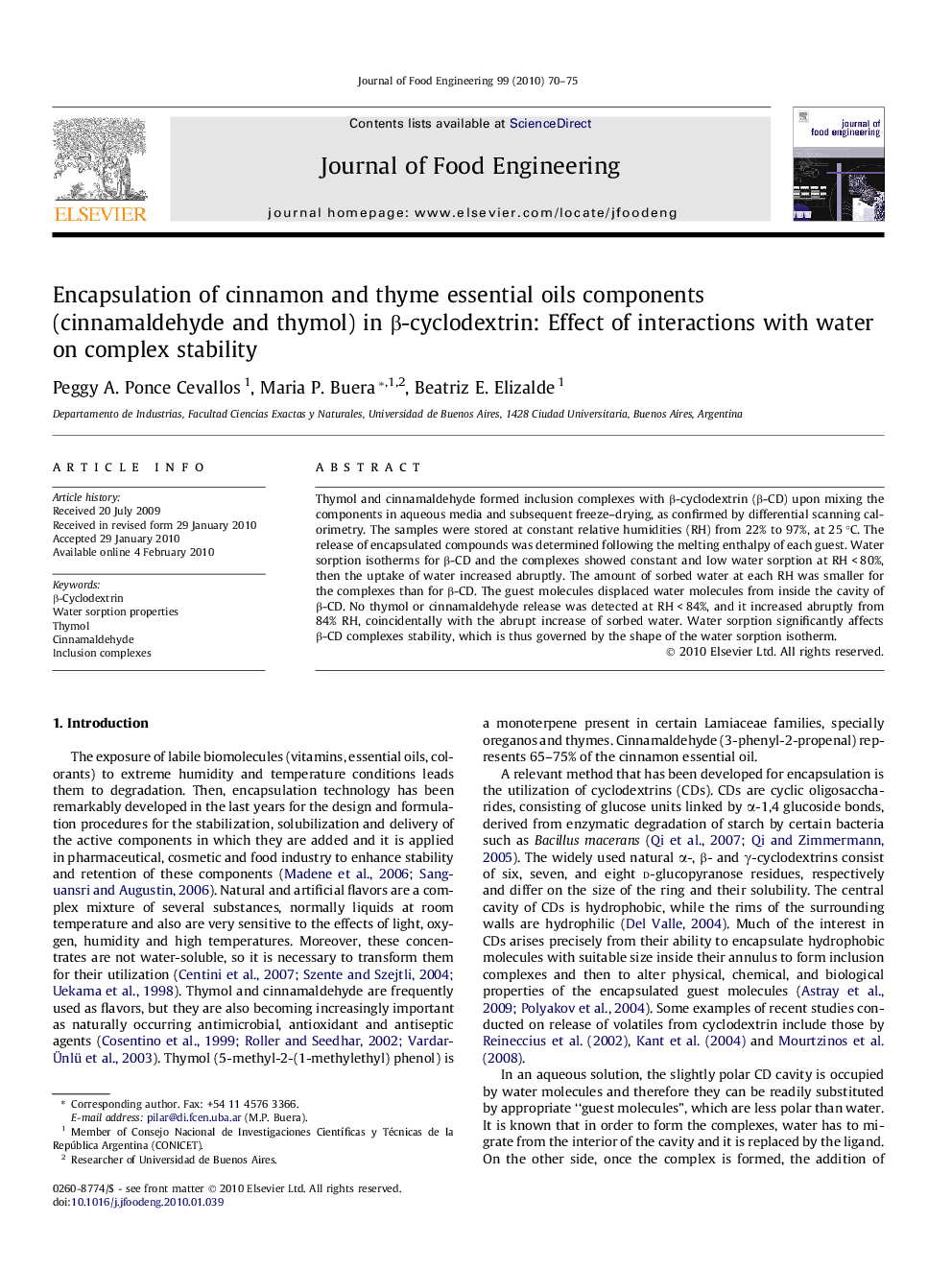| Article ID | Journal | Published Year | Pages | File Type |
|---|---|---|---|---|
| 224507 | Journal of Food Engineering | 2010 | 6 Pages |
Thymol and cinnamaldehyde formed inclusion complexes with β-cyclodextrin (β-CD) upon mixing the components in aqueous media and subsequent freeze–drying, as confirmed by differential scanning calorimetry. The samples were stored at constant relative humidities (RH) from 22% to 97%, at 25 °C. The release of encapsulated compounds was determined following the melting enthalpy of each guest. Water sorption isotherms for β-CD and the complexes showed constant and low water sorption at RH < 80%, then the uptake of water increased abruptly. The amount of sorbed water at each RH was smaller for the complexes than for β-CD. The guest molecules displaced water molecules from inside the cavity of β-CD. No thymol or cinnamaldehyde release was detected at RH < 84%, and it increased abruptly from 84% RH, coincidentally with the abrupt increase of sorbed water. Water sorption significantly affects β-CD complexes stability, which is thus governed by the shape of the water sorption isotherm.
